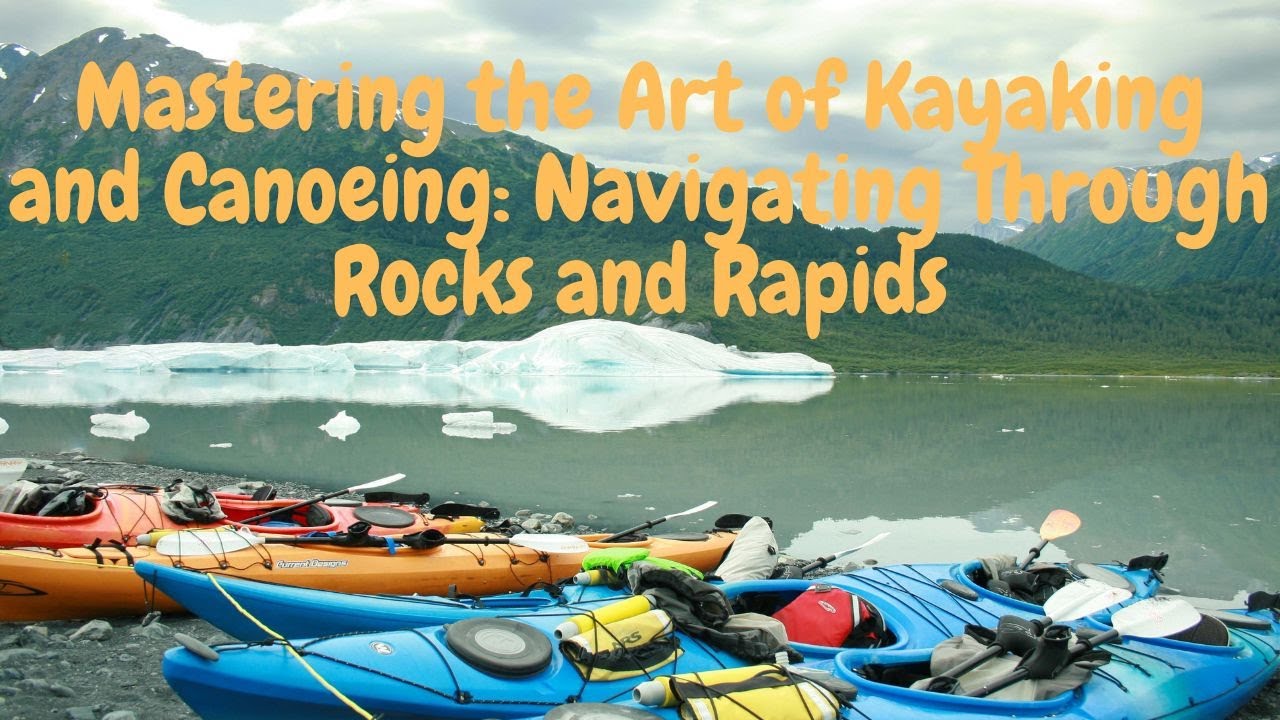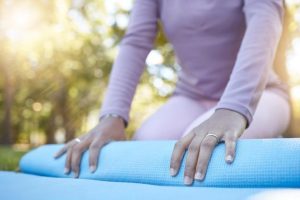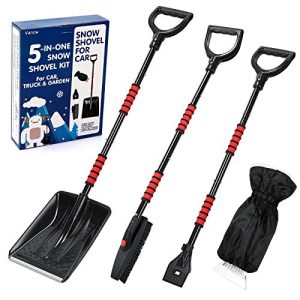Contents
Whether you’re a seasoned kayaker or a beginner looking to try something new, mastering the art of stand up kayaking is an exhilarating challenge that combines balance, strength, and a love for the water. Standing tall on your kayak not only offers a unique perspective of the surrounding scenery but also increases your maneuverability and allows for a more engaging experience. In this article, you will discover the essential techniques, tips, and equipment needed to confidently stand up on your kayak and take your kayaking adventures to new heights. Get ready to paddle, balance, and embrace the thrill of stand up kayaking!
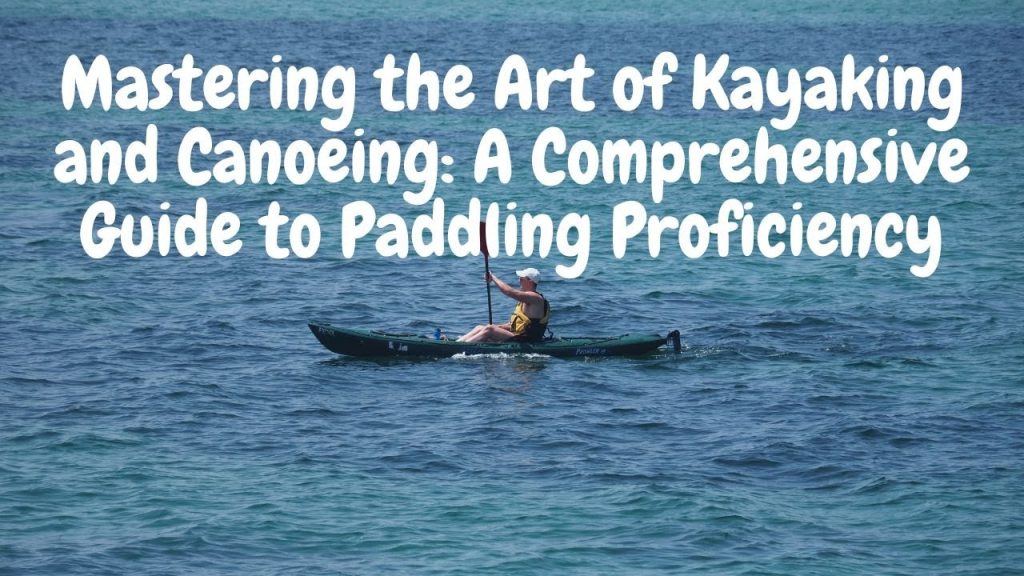
Choosing the Right Kayak
When it comes to choosing the right kayak, there are several factors to consider. One of the most important considerations is the type of water you will be paddling in. Different types of kayaks are designed for specific environments, so it’s crucial to choose one that suits your needs. For calm and flat waters such as lakes and slow-moving rivers, a recreational kayak is a good option. On the other hand, if you plan on tackling whitewater rapids or coastal waters, a more specialized kayak, such as a whitewater or sea kayak, would be more appropriate.
Another important factor to consider is the size of the kayak. The size of the kayak not only affects its stability on the water but also its maneuverability. Smaller kayaks are more responsive and easier to maneuver, making them ideal for navigating through narrow rivers and tight spots. However, they may sacrifice some stability compared to larger kayaks. Larger kayaks, on the other hand, offer more stability, making them suitable for beginners or those who prefer a more relaxed paddling experience.
Stability is another key consideration when choosing a kayak. Different kayaks have varying levels of stability, with some being more stable than others. If you’re a beginner or prefer a more stable ride, look for kayaks with a wider hull and a flatter bottom. These characteristics contribute to better initial and secondary stability, making the kayak less likely to tip over. However, keep in mind that increased stability may come at the cost of speed and maneuverability.
The weight capacity of the kayak is also an important consideration, especially if you plan on carrying gear or going on longer paddling trips. Make sure to choose a kayak with a weight capacity that can comfortably accommodate both your body weight and any additional gear you might be bringing along. It’s always better to have some extra weight capacity to spare rather than pushing the kayak’s limits.
Lastly, don’t forget to consider the comfort of the kayak’s seat. Since kayaking can involve spending several hours on the water, it’s essential to have a comfortable seat that provides adequate support for your back and butt. Look for kayaks with adjustable seats and backrests to ensure a customized fit that suits your body type and paddling style. Taking the time to choose a kayak with a comfortable seat will greatly enhance your overall kayaking experience.
Essential Gear and Equipment
When heading out for a kayaking adventure, it’s essential to have the right gear and equipment to ensure your safety and comfort on the water. Here are some items that should be on every kayaker’s list:
First and foremost, a proper paddle is crucial for effective and efficient propulsion through the water. Select a paddle that matches your height and paddling style. For recreational kayaking, consider using a longer, wider-bladed paddle, while for whitewater kayaking or touring, a shorter, narrower-bladed paddle may be more suitable. It’s also important to learn and practice proper paddling techniques to maximize your efficiency and reduce the risk of injury.
A Personal Flotation Device (PFD) is another must-have item for kayakers. This essential piece of safety equipment ensures buoyancy and can potentially save your life in the event of an accident. Choose a PFD that is comfortable and fits securely, adjusting the straps to ensure a snug but not constricting fit. It’s crucial to wear your PFD at all times on the water, regardless of your swimming ability.
Safety leashes are useful tools that help keep your gear secure and prevent loss in case of capsize or accidental drops. Leashes can be attached to your paddle, fishing rods, or any other items you want to keep within reach. This ensures that even if you lose your grip, the gear will remain with you, making it easier to retrieve and reducing the risk of losing valuable equipment.
To protect your belongings from water damage, invest in dry bags and waterproof cases. These waterproof containers keep your essentials, such as cell phones, cameras, and spare clothes, dry and secure during your kayaking trips. Look for bags and cases that are durable, waterproof, and have airtight closures to provide maximum protection against water ingress.
Navigational tools such as maps, compasses, and GPS devices are essential for those venturing into unfamiliar waters. These tools help you navigate and stay on course, ensuring a safe and enjoyable kayaking experience. Familiarize yourself with your chosen navigational tools and practice using them before heading out on your kayaking adventures.
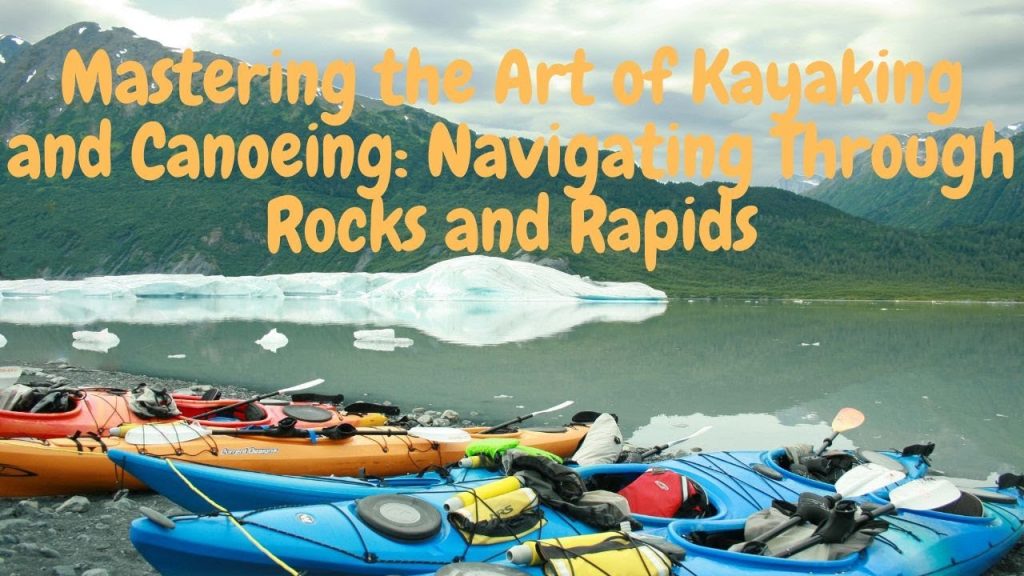
Basic Stand Up Kayaking Techniques
Stand up kayaking, also known as stand up paddleboarding (SUP), is a popular variation of traditional kayaking that offers a unique and exhilarating experience. Here are some basic techniques to help you get started and master the art of stand up kayaking:
Maintaining balance is the foundation of stand up kayaking. Begin by positioning yourself in the center of the kayak, with your feet shoulder-width apart. Engage your core muscles to stabilize your body and maintain a low center of gravity. Practice shifting your weight and making small adjustments to maintain balance as you paddle.
The proper stance is crucial for maintaining stability while stand up kayaking. Keep your knees slightly bent and your weight evenly distributed between both feet. Avoid locking your knees or leaning too far forward or backward, as this can throw off your balance. It’s important to stay relaxed and flexible, allowing your body to respond to changes in the water’s movement.
Paddling techniques for stand up kayaking are slightly different from traditional kayaking. Hold the paddle with one hand on the shaft and the other on the T-Grip, keeping your arms slightly wider than shoulder-width apart. Use a sweeping motion to paddle, engaging your core and torso muscles. Start with short strokes and gradually increase your paddle strokes as you gain confidence and strength.
When it comes to turning and maneuvering in a stand up kayak, the use of sweep strokes is key. To turn in the desired direction, extend your paddle out to the side and away from the kayak, sweeping it through the water in a wide arc. Practice on calm waters before attempting turns in more challenging conditions.
Bracing and recovery techniques are essential for maintaining balance and avoiding capsizing. When you feel unsteady or off balance, use your paddle as a brace by extended it out to one side and pressing it into the water. This will provide additional stability and help prevent a potential fall. If you do happen to fall off the kayak, learn proper recovery techniques to quickly and safely get back on board.
Building Core Strength and Balance
Stand up kayaking requires a strong core and excellent balance. Building core strength not only enhances your stand up kayaking skills but also reduces the risk of injury and improves overall fitness. Here are some exercises and training techniques to help you build core strength and improve your balance:
Exercises for core strength play a crucial role in improving your stability and control while stand up kayaking. Incorporate exercises such as planks, Russian twists, and bird-dogs into your regular workout routine. These exercises target the abdominal, back, and hip muscles, which are essential for core stability and balance.
Balance and stability training are essential for stand up kayaking. Simple exercises such as standing on one leg or using a balance board can help improve your balance and proprioception. As you become more confident, challenge yourself by performing these exercises on an unstable surface such as a foam pad or inflatable disc.
Yoga and Pilates are excellent complementary activities for stand up kayaking. Both disciplines focus on building core strength, improving balance, and increasing flexibility. Incorporate yoga poses such as tree pose, warrior pose, and boat pose into your routine to target the muscles used in stand up kayaking. Pilates exercises, such as the Hundred or the Plank, also help strengthen the core and improve stability.
Improving upper body strength is important for paddling power and endurance. Include exercises such as push-ups, pull-ups, and resistance band exercises to target the muscles in your arms, shoulders, and back. Strengthening these muscles will not only enhance your paddle stroke but also reduce fatigue during longer stand up kayaking sessions.
Stretching and flexibility routines are essential for preventing muscle imbalances and maintaining a full range of motion. Incorporate stretching exercises for your upper body, lower body, and core into your pre- and post-kayaking routine. Focus on stretches that target areas that tend to become tight from paddling, such as the shoulders, chest, hips, and hamstrings.
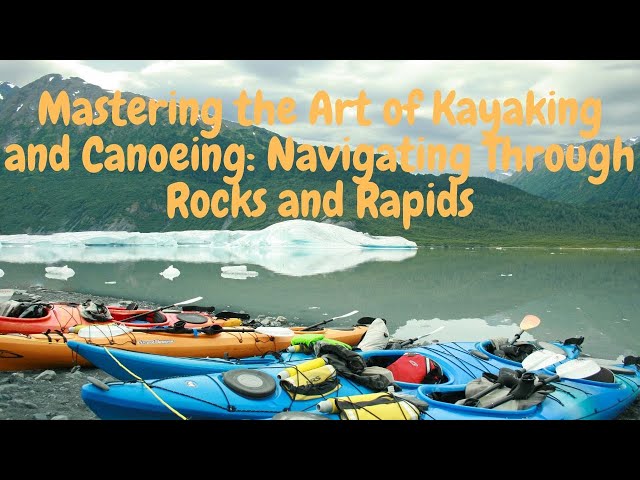
Safety Considerations
Safety should always be a top priority when engaging in any water sport, including kayaking. Here are some important safety considerations to keep in mind:
Having sufficient swimming ability is crucial before attempting kayaking. While wearing a PFD provides buoyancy and safety, being a competent swimmer ensures that you have the necessary skills and confidence to handle unexpected situations in the water. Enroll in swimming lessons or practice swimming regularly to improve your swimming abilities.
Mastering self-rescue techniques is essential for any kayaker. Whether it’s knowing how to re-enter the kayak after falling overboard or performing a wet exit, understanding these techniques can be lifesaving. Practice self-rescue techniques in controlled environments and consider taking a rescue and recovery course to improve your skills.
Always be aware of weather conditions before heading out on the water. Check the weather forecast and be prepared for changing conditions, including wind, rain, or dropping temperatures. Avoid kayaking in severe weather conditions or when there is a risk of thunderstorms, strong currents, or high waves.
Knowing the water rules and regulations is essential for kayaking safely and responsibly. Familiarize yourself with any restrictions, designated areas, or speed limits in the waters you plan to paddle. Observe any rules regarding right of way, navigation aids, and potential hazards to avoid dangerous situations.
Understanding potential hazards is also important for safety while kayaking. Be aware of common hazards such as rocks, submerged trees, strong currents, and sudden changes in weather conditions. Learn to read the water and anticipate potential dangers to minimize risks and keep yourself and others safe.
Navigating Different Waters
Kayaking offers the opportunity to explore various types of water bodies, each with its own unique challenges and beauty. Here’s a brief overview of different types of waters and considerations for navigating them:
Rivers and streams provide an exciting and dynamic environment for kayaking. Pay attention to the river’s current, as it determines the difficulty level and speed of your paddle. Learn to read the river’s flow and identify potential obstacles such as submerged rocks and fallen trees. It’s also essential to be aware of changing water levels due to weather conditions or dam releases.
Lakes and reservoirs offer calm and peaceful kayaking experiences. Before venturing out, familiarize yourself with the lake’s layout and any regulations regarding speed limits or restricted areas. Keep an eye out for boat traffic and potential motorized watercraft, and always maintain sufficient distance from other boaters to ensure your safety.
Coastal waters offer a unique kayaking experience with beautiful shorelines and the possibility of encountering marine wildlife. However, coastal waters can also present challenges such as tides, currents, and unpredictable weather conditions. Check the tide tables and weather forecasts before paddling, and always wear appropriate safety gear, including a wetsuit or drysuit, and a PFD.
Whitewater and rapids provide an exhilarating and adrenaline-pumping kayaking experience. Before tackling whitewater, gain experience and skills in calmer rivers and gradually progress to more challenging rapids. Seek guidance from experienced kayakers or take whitewater kayaking courses to ensure your safety and enhance your skills.
Tides and currents are crucial considerations when kayaking in coastal areas or large bodies of water affected by tidal movements. Study tide charts and current patterns to plan your paddling trips accordingly. Know the timing of high and low tides to optimize your paddle and be aware of potential dangerous currents that can affect your journey.
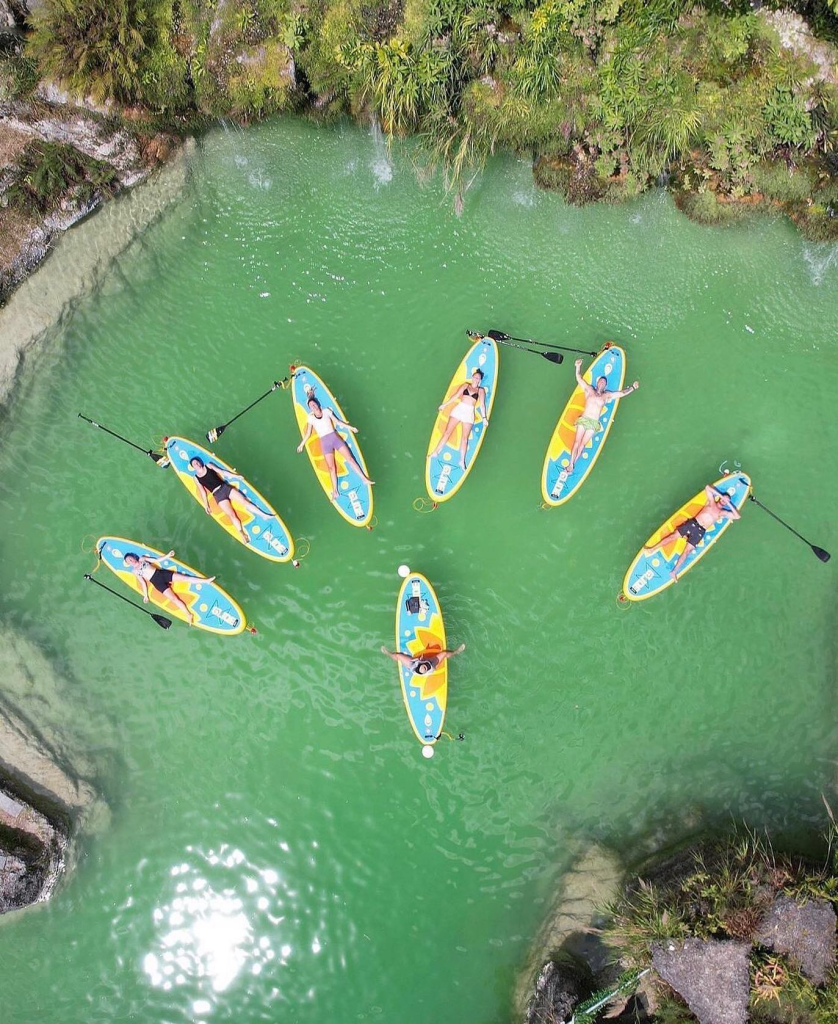
Advanced Techniques and Tricks
Once you have mastered the basics of kayaking, you may be ready to explore more advanced techniques and tricks. Here are some exciting techniques to challenge yourself and take your kayaking skills to the next level:
Surfing waves in a kayak is an exhilarating experience that requires skill and timing. Learn to read the waves and understand the different types of breaks. Paddle into the wave, and as it starts to carry you, use your body and paddle to maintain balance and steer the kayak. Start with small waves and gradually progress to larger, more challenging waves.
Performing Eskimo rolls is an advanced technique used to recover from a capsized position while remaining in the kayak. This technique requires practice and confidence. Utilize your body and paddle to execute a smooth roll, keeping your head submerged until the roll is complete. Seek guidance from experienced kayakers or enroll in Eskimo roll workshops to learn and perfect this technique.
Edging and carving are techniques that allow you to maneuver the kayak with precision and control. By tilting the kayak on its edge, you can maximize the boat’s turning ability and carve through the water. Practice edging and carving in calm waters before attempting them in more challenging environments.
Doing freestyle moves adds an element of creativity and playfulness to kayaking. Learn tricks such as spins, flips, and side-surfing to add excitement and style to your paddling. However, always prioritize safety and practice these moves in controlled environments under the guidance of experienced kayakers.
Mastering stand up river running is an advanced technique that combines the skills of stand up paddling and whitewater kayaking. This technique allows you to navigate rivers and rapids while standing on your kayak. It requires a high level of skill, balance, and control. Seek guidance from experienced stand up river runners and progress gradually to more challenging river sections.
Common Mistakes to Avoid
To ensure a safe and enjoyable kayaking experience, it’s important to be aware of common mistakes and take steps to avoid them. Here are some common mistakes to watch out for:
Leaning too far or incorrectly can compromise the stability and control of your kayak. Maintain a balanced and upright posture, distributing your weight evenly between your hips and feet. Avoid excessive leaning or sudden weight shifts that can lead to capsizing or loss of control.
Using poor paddling techniques can greatly affect your efficiency and make your paddling experience more challenging. Learn and practice proper paddling techniques, including grip, stroke, and body positioning. Maintain a smooth, rhythmic paddle stroke and focus on engaging your core and torso muscles for maximum power and efficiency.
Neglecting safety equipment, particularly your PFD, can have serious consequences. Always wear a properly fitted PFD and ensure it is securely fastened before heading out on the water. Take the time to adjust the straps to ensure a snug fit that allows for comfortable movement and mobility.
Ignoring weight distribution can affect the stability and maneuverability of your kayak. Pay attention to how you distribute weight in your kayak, placing heavier items lower and closer to the kayak’s center for better stability. Avoid overloading the kayak or unevenly distributing weight, as this can cause it to tip over or become difficult to control.
Lack of practice and skill development can lead to frustration and limit your kayaking experience. Regularly practice and refine your paddling techniques and safety skills. Seek opportunities for guided practice, take lessons, or participate in skills development courses to continually improve and enhance your kayaking abilities.
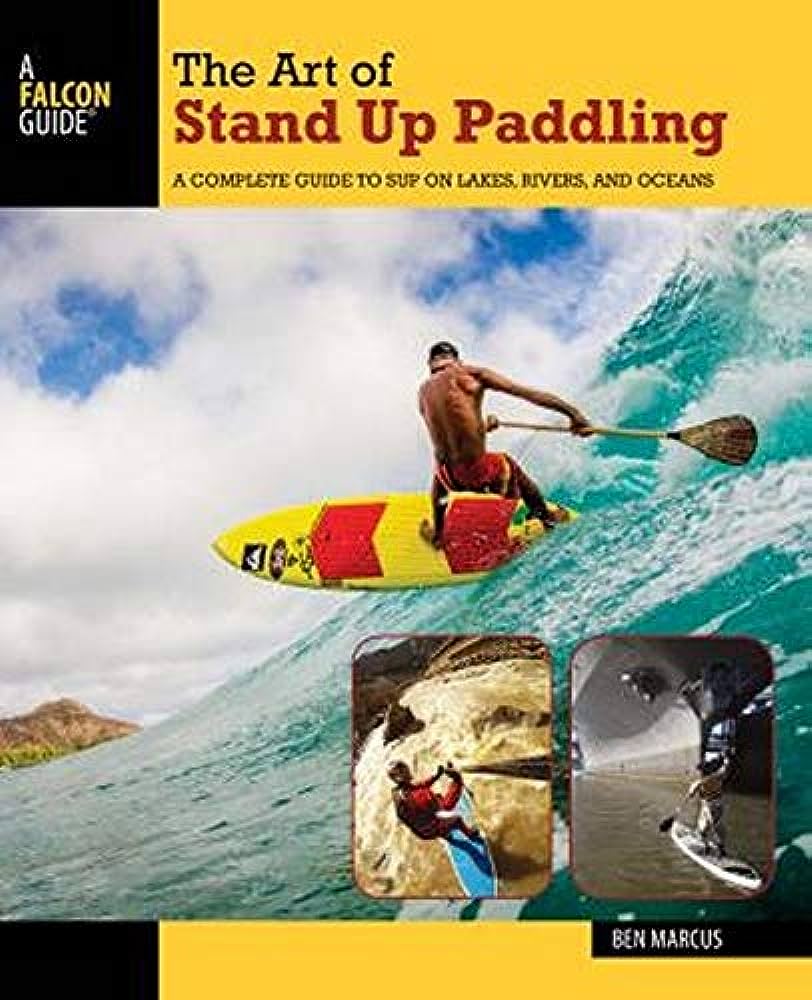
Preventing and Dealing with Capsizing
Capsizing is a possibility when kayaking, especially in challenging conditions or while mastering new techniques. Knowing how to prevent and deal with capsizing is essential. Here are some important considerations:
Recovering from a capsize requires both preparation and practice. Ensure you know how to perform a wet exit, which involves safely exiting the kayak when it is upside down or submerged. Practice this technique in calm waters before attempting it in more challenging conditions. Understand the importance of staying calm and focused during a capsize and recovery situation.
Preventive measures can reduce the risk of capsizing. Maintain a strong and stable posture, keep your weight centered, and be aware of potential hazards such as rocks or strong currents. Develop good situational awareness and adjust your paddling technique and speed accordingly to prevent capsizing.
Dealing with panic is crucial in a capsize situation. Panicking can impair judgment and decision-making, potentially putting yourself and others at risk. Learn and practice relaxation techniques, such as deep breathing and positive self-talk, to help stay calm and focused in challenging situations.
Securing gear and equipment is important both before and after a capsize. Before heading out on the water, ensure all gear and equipment are properly secured and attached. This prevents gear from becoming loose and potentially causing hazards in a capsize situation. After a capsize, make sure to secure any loose gear before attempting to re-enter the kayak or recover from the situation.
Getting back on the kayak after a capsize requires specific techniques. Practice self-rescue techniques such as the paddle float re-entry, where the paddle float is attached to the paddle blade and used as an outrigger for stability. Always prioritize safety and be prepared to call for assistance if needed. Regular practice and familiarity with self-rescue techniques will greatly enhance your ability to recover from a capsize.
Joining a Kayaking Community
Joining a kayaking community can provide numerous benefits, including opportunities for learning, networking, and sharing experiences with like-minded individuals. Here are some ways to become a part of the kayaking community:
Attending kayaking workshops and events is a fantastic way to learn from experienced kayakers, gain new skills, and meet fellow enthusiasts. Look for workshops or events in your local area that focus on specific aspects of kayaking, such as technique improvement, safety training, or equipment demonstrations.
Joining kayaking clubs and organizations allows you to connect with a community of individuals who share your love for kayaking. These clubs and organizations often offer group outings, training programs, and social events that provide opportunities to learn from others, improve your skills, and build relationships.
Finding local meetup groups dedicated to kayaking is a great way to connect with other kayakers in your area. These groups often organize regular outings, allowing you to explore new waters and meet new friends who share your passion for kayaking. Meetup groups are usually open to all levels of kayakers, from beginners to experts.
Participating in training programs offered by professional kayaking instructors can give you access to expert guidance and structured learning experiences. These programs often cover various aspects of kayaking, including safety, technique improvement, and advanced skills development. By participating in training programs, you can enhance your skills and knowledge, and gain confidence as a kayaker.
Seeking guidance from experienced kayakers can fast-track your learning and provide valuable insights. Reach out to local kayaking clubs, organizations, or even fellow kayakers you meet during outings. Most experienced kayakers are happy to share their knowledge and provide guidance to newcomers. Consider finding a mentor who can provide personalized advice and help you progress as a kayaker.
In conclusion, choosing the right kayak, acquiring essential gear and equipment, mastering stand up kayaking techniques, building core strength and balance, and prioritizing safety considerations are all crucial aspects of becoming a skilled and responsible kayaker. Navigating different types of waters, exploring advanced techniques and tricks, and avoiding common mistakes further enhance the joy and satisfaction of this fantastic water sport. By joining a kayaking community, you can connect with other kayakers, learn from their experiences, and share your own, fostering a sense of camaraderie and lifelong enjoyment of the sport. So dive in, embrace the adventure, and let the wonders of kayaking unfold!

